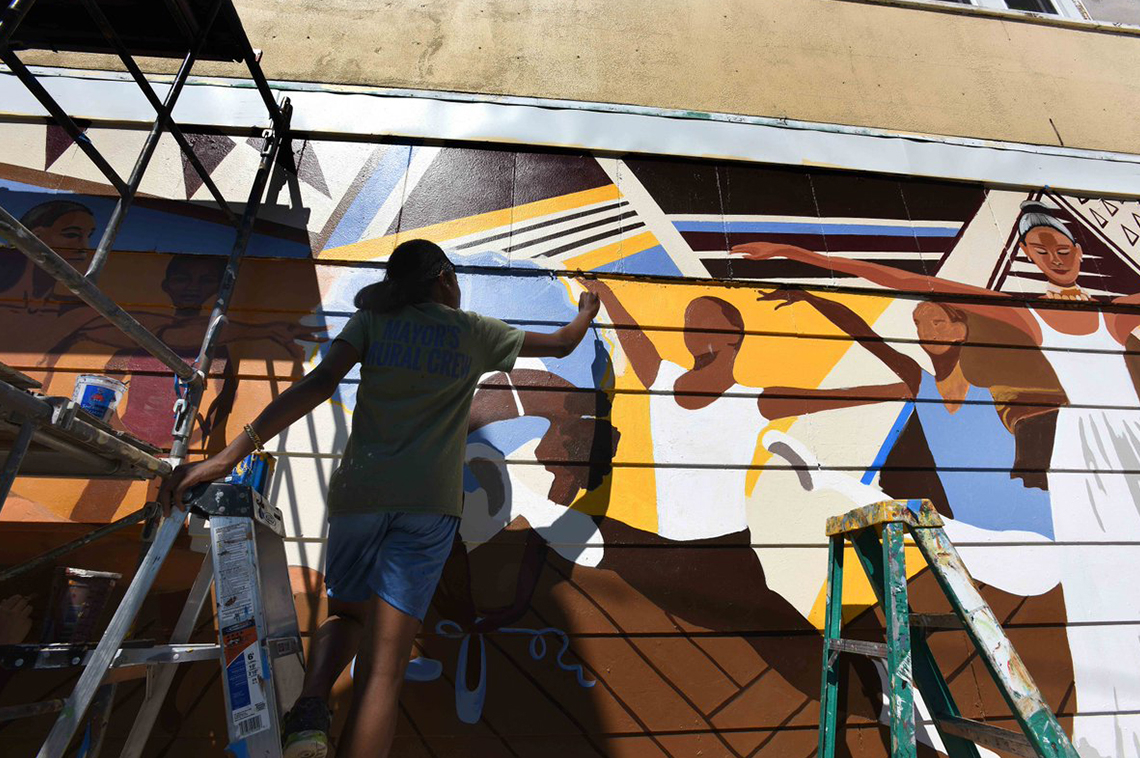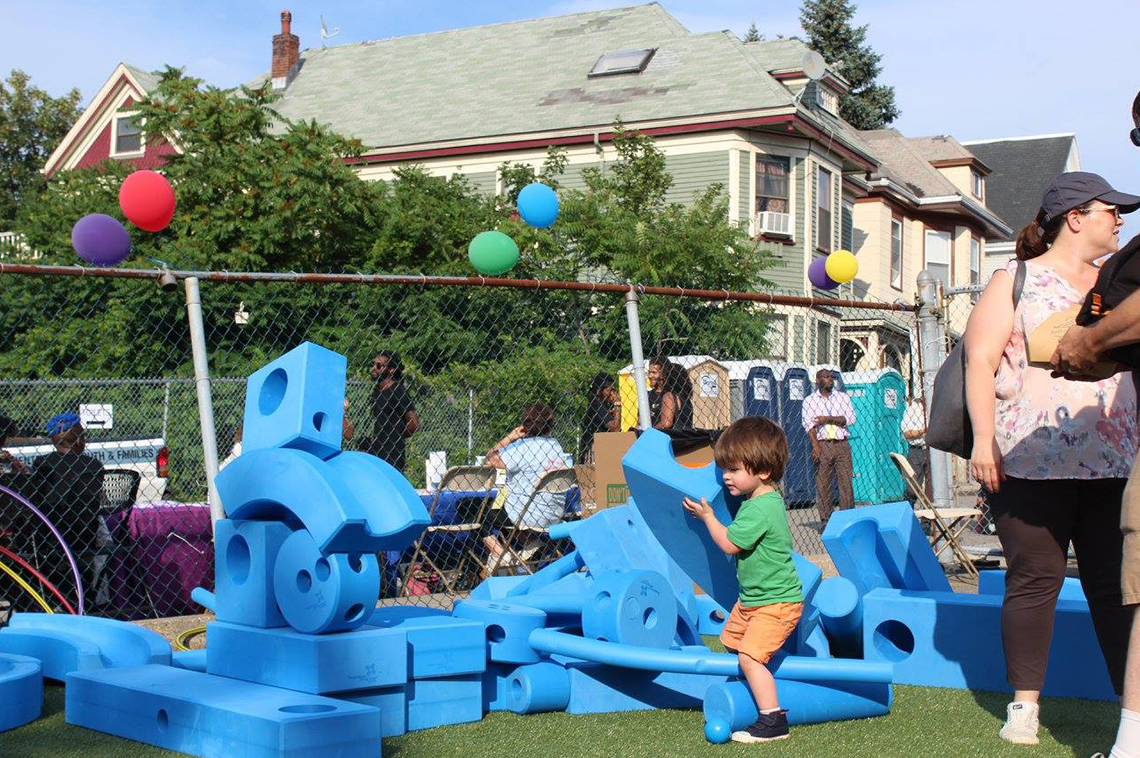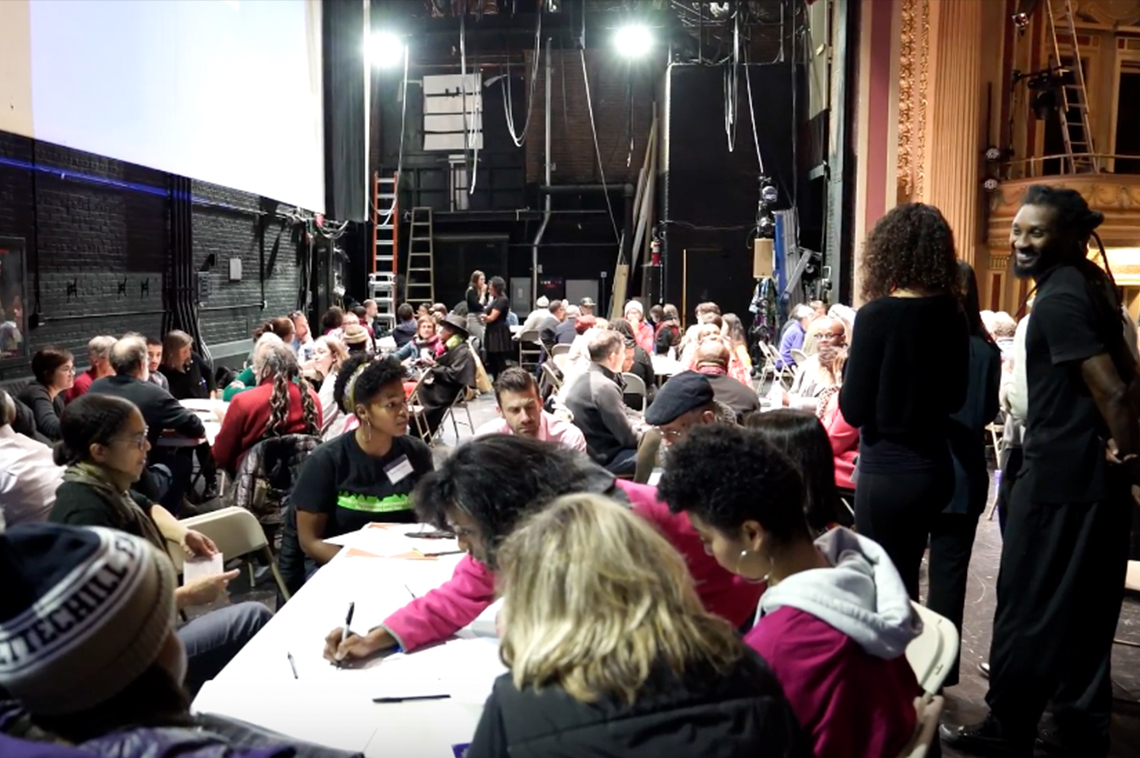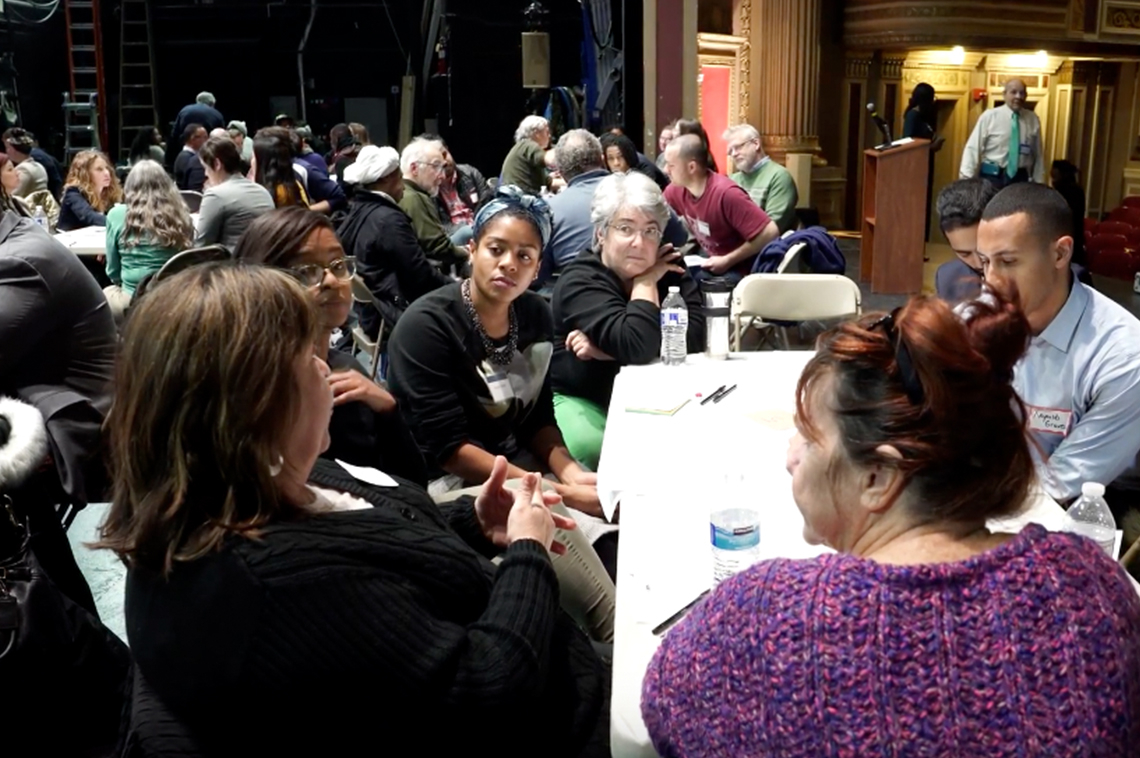



Kara Elliott-Ortega is the Director of Planning & Policy at the Mayor’s Office of Arts and Culture for the City of Boston. We caught up with her to find about the groundbreaking intersection of arts and culture with the built environment and community development in Boston.
How did this unique role come about?
The Mayor's Office of Arts and Culture used to be part of another office, the Mayor’s Office of Tourism and Special Events. Mayor Walsh ran on a platform that included supporting the arts, and when he started his term four years ago, he created the office of Arts and Culture as its own department and hired a Chief of Arts and Culture, which is the first cabinet-level position for the arts in the City of Boston. The City released its first cultural plan, Boston Creates, and as a city planner by training I worked on that planning effort.
What does someone in your role actually do?
A lot of what I do now is help launch initiatives that came out of Boston Creates and help relate what we do to the work of other departments and other planning efforts. For example, we launched the ‘Percent for Art’ program, which is the largest financial investment that came out of the cultural plan. This initiative leverages the City’s five year capital plan to invest in public art as part of major city construction and infrastructure projects, by devoting 1% of the City’s annual capital borrowing budget toward commissioning new artwork. This past year, that translated into $1.7 million in funding for public art. I am helping get that program up and running, by working City departments that manage capital construction projects to think about how to incorporate public art and working with the Boston Art Commission on building a community process around the program. I also help interface our work with other planning efforts like Imagine Boston 2030 - Boston’s first citywide plan in 50 years. Right now that means working on pilot project in an area called Upham’s Corner that we have named an Arts Innovation District. All of Boston is experiencing high demand for housing, so this effort has really embraced the idea of development without displacement. The City is acting preemptively to redevelop the properties based on recommendations from residents by acquiring property before the real estate market pushes prices too high. It’s an exciting example of the City leading a development project, and trying to accomplish development without displacement, while also creating an arts hub. The Office of Arts and Culture is at the table with the Office of Economic Development, the Boston Planning and Development Agency, the Department of Neighborhood Development, and the Boston Public Library.
How do you engage the community and bring them along with the plan?
This community has undergone many planning exercises, so this project in Upham’s Corner is really about implementation and getting something done based on the community’s input in the last ten years. As we lead up to the development of these parcels, we have been very intentional about involving artists in community meetings and vetting the City process and the City’s public materials with community partners. The process has been iterative and very dynamic - we have to be able to build in time for that community review and feedback. It is also critical that we have amazing community partners who not only know the neighborhood and affordable housing, but also know the arts and the importance of design and culture in community process. Those partners are Dudley Street Neighborhood Initiative and Design Studio for Social Intervention.
How do you get all of the people working on this to engage in a power analysis?
I have found it very helpful to be someone who has done community organizing in the past. I have the arts and municipal perspective, but I also understand what the community is asking for, which is to think holistically about what community engagement and the project. Arts and culture are already a part of the community, so we have brought that into the process so that people can hear their concerns reflected back to them in a way that is authentic to their experience. We are also trying to be very honest about what we don't have answers to, and invite our partners and the community to help us solve those problems together at every stage. We’re accepting the charge from the community to speak to commercial affordability and other complex challenges, while also acknowledging that this site will not be a silver bullet for the issues that the neighborhood is facing. I think can feel a little bit vulnerable, but that honesty from the City results in much stronger community relationships. Having different voices at the table, including healthy skepticism, helps create a sense of accountability to the goals of development without displacement. These conversations bring up questions of community control and decision-making so that we can codify when and how the community has a say.
One of the big advantages of having all these departments at the table is that we can think across all of our existing services and plans to ask “what are the new policy tools or ideas that we could pilot here?” We have been starting by working together on factoring in the potential housing and commercial displacement risks, which has pushed us to do some different kinds of data analysis and ask where the gaps or opportunities are. This is ideally what everyone should be doing during a process like this, but it's so hard to actually do it in real time.
What would your advice be for any community development planning initiatives that aren’t set up like Boston?
I think that one thing that we have done in Upham’s Corner that could be replicated is having a more interdepartmental team with community members. The group of people who impact this project and is so much broader than the City planners. Having other departments involved, having artists and community partners in on what are traditionally more internal conversations - this is necessary for thinking about how to this project can be catalytic, leverage other initiatives, and have community ownership. It is the reason that we can integrate the arts into the process and the development itself. It is also definitely a lot more work. For every public meeting, there are another 20 internal meetings, but that is what has made it possible to have room for creativity. As someone at the intersection of arts and planning, it has been exciting to see this receptiveness in the City to new ideas about how to work with our community partners.
How do you think that other places can encourage their elected officials and their government departments to get involved in this way of planning?
While lot of cities have recognized that planning has historically perpetuated racism and injustice, particularly through urban renewal and redlining, the challenge of how to institutionalize meaningful change in planning remains - particularly because it is so professionalized. I attribute our positive process in Upham’s Corner to the trust between the community partners and the City and the depth of that partnership. Planners play a unique role in their ability to cultivate this approach by working across agencies and collaborating with community organizations and artists, but this is also a question of leadership and power. Planners can and should be advocates, and have the responsibility of showing their leadership why this approach is necessary and effective. When we do have these opportunities, we have to be sure to tell the story of what worked and why so that it can be institutionalized and expanded on.





